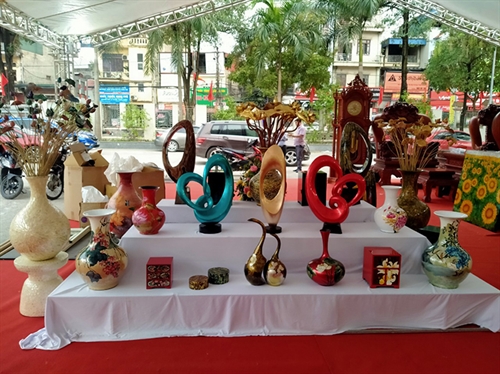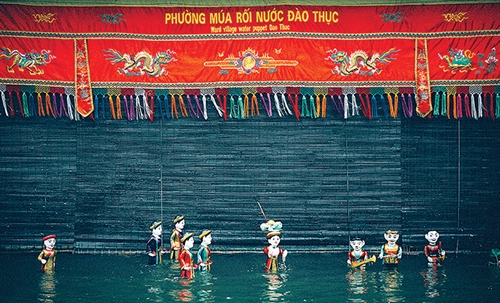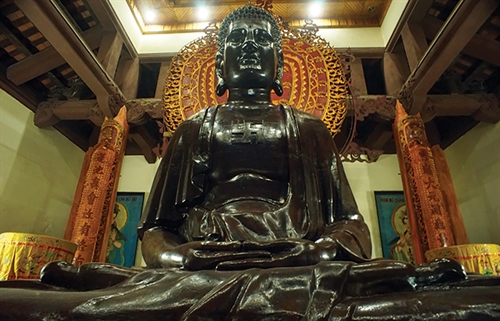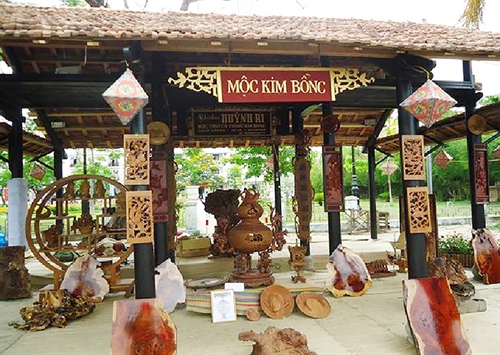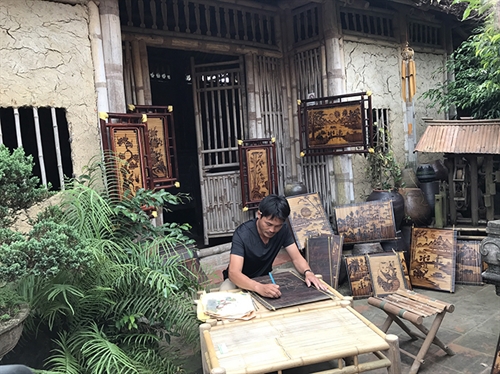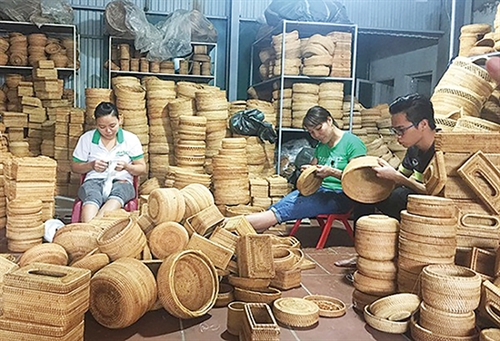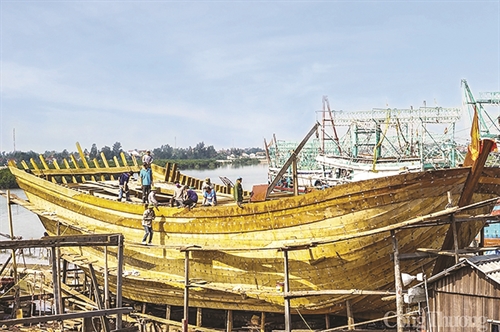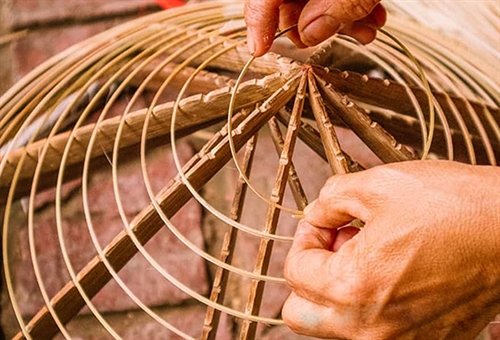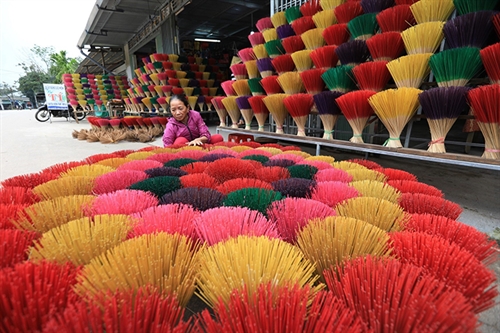>>Marriage rites of the San Diu
>>"San Diu" ethnos with its customs, practices and customary law
Ta Thi Tam
Ethnology Institute
The San Diu, which lives in northern mountainous areas with a population of nearly 147,000, celebrates quite a lot of festivals the most important of which is Tet, the lunar New Year festival.
The group considers Tet an occasion for family members to gather after a year of hard work. To welcome the new year, San Diu people decorate their homes with red papers stuck on ancestor altars, entrance doors, gates and perennial trees in their gardens in the belief that red papers will bring in fortune and happiness for not only their own families but the community and other living creatures as well.
While eating simple food like vegetable, bamboo shoot, taro and bean everyday, the San Diu prepares numerous dishes for Tet, including fried pork, fried duck, banh tay (long sticky rice cake with green bean and pork filling), banh gio (cake made from stick rice soaked in forest leaf liquid and served with honey) and sour meat.
About one week before Tet, San Diu families buy food or kill pigs to make Tet dishes which can be reserved for as long as one month as the group has good food preservation methods.
At the Tet fair which is held right before Tet, San Diu women sell their self-made products such as peanuts, beans, chickens and ducks to buy domestic utensils and new clothes for children and elderly people.
During Tet, the San Diu wears beautiful costumes. A man wears a black five-panel shirt long down to the knees, which is buttoned on the right, and white or brown trousers with wide and straight legs, long crotch and broad upper hems. He also wears a shorter white shirt inside. A woman costume includes a headdress, a brown bodice, a short brown blouse, which is buttoned to the collar and has two small pockets on the flaps, a four-panel knee-length dress with the upper part in brown and the lower part in black, which can be either buttoned or not, and a black long skirt. San Diu women wear leggings and slippers or wood clogs.
On the New Year’s Eve, the San Diu makes an offering meal for their ancestors, praying for their support for a lucky and prosperous new year. The offerings include a chicken or a piece of boiled pork, a bottle of wine, fruits and Tet cakes.
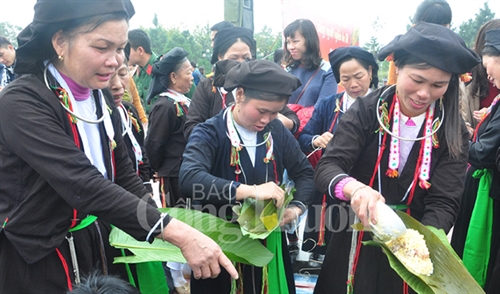 |
| Banh tay (long sticky rice cake with green bean and pork filling) of the San Diu__Photo: Internet |
On the first day of the lunar New Year, San Diu families eat porridge served with minced meat and spring onion. After the new year meal, children wish their parents good health and elderly people give little kids lucky money. After that, men visit relatives and villagers to give new year wishes. Women can go out but are not supposed to visit any families so they often stay at home to receive guests.
On the first and second days of Tet, San Diu people are not supposed to dump rubbish, which is only swept into a corner of their houses. Rubbish disposal during Tet is believed to deny the family of good fortune throughout the year. Only on the third day, they put rubbish together with a piece of banh tay in a basket stuck with a burning incense and dump it under a big tree in the village in the belief that hungry evil spirits are driven out of their homes.
On the second day of the new year, every San Diu family prepares a hearty meal for offering to ancestors. The meal includes different dishes made from chicken and pork and five bowls of banh troi (scalded round sticky rice cake with brown sugar filling). After the offering ritual, the family shares the meal with relatives and guests.
During Tet, San Diu young people sing soong co, a kind of responsive singing between boy and girl groups. In this typical folk art of the group, young men and women sing songs about their villages, ancestors, friendship and love. From the second day of Tet onward, young people sing all day long and even throughout the night. Those having amorous intentions separately sing in couples to get to know about each other and their families. Soong co songs, which cover different topics from spring welcome, celebration of new year, new home and wedding, to friend-making and love, can be sung for weeks and even for months till the end of spring.
Apart from the lunar New Year festival, the San Diu celebrates thanh minh, a festival in memory of the dead held in the third lunar month. During thanh minh, San Diu people clean graves of their clans and make ritual offerings to the dead. The offering is sticky rice in red, black and yellow which is put on ancestor altars and graves. To color the rice, San Diu people soak it in liquids made from forest leaves having these colors for quite a time before cooking. After conducting the offering ritual, San Diu people are not supposed to bring home the offering made to the dead on their graves but give it to children they meet on the way home. Other thanh minh dishes include banh rom (sticky rice cake with pork or green bean filling), banh troi, fried pork and fried duck.
Other festivals of the San Diu include doan ngo, a mid-year festival for prevention of diseases and warding off of evil spirits held on the 5th of the fifth lunar month (the day of transition from spring to summer), ram thang bay, a Buddhist festival held on the 15th of the seventh lunar month, which is for children to express their gratitude and appreciation to their parents, new rice festival held in the ninth lunar month, and the winter solstice festival held on December 21st or 22nd. For each festival, the group prepares different traditional foods typical of that festival.-
